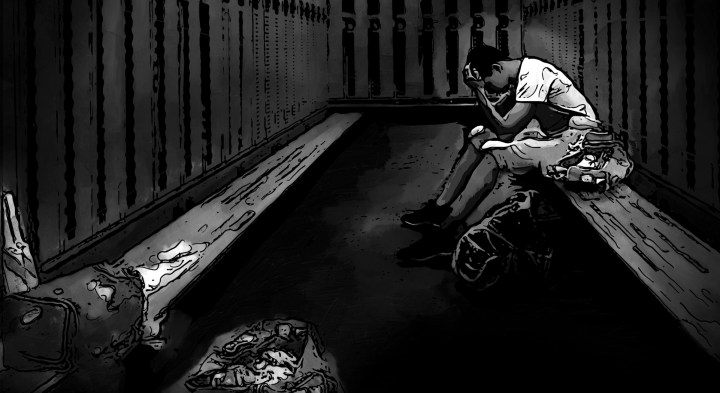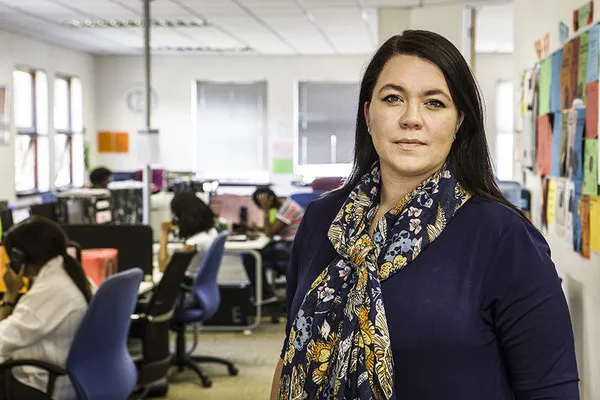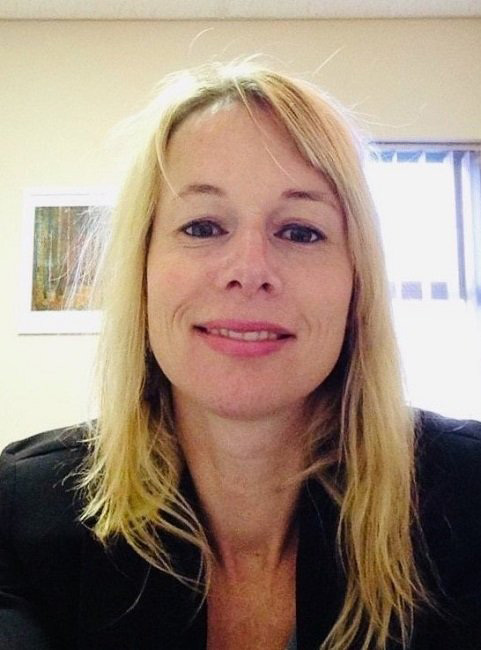TEEN SUICIDE PREVENTION WEEK
Teenage suicide on the rise in SA, warns Sadag — here’s how to get help

The South African Depression and Anxiety Group has noted a noticeable increase in the number of adolescents struggling with mental health issues often leading to tragic outcomes.
“Every week in South Africa should be teen suicide prevention week because one suicide is one too many,” said Cassey Chambers, Operations Director at the South African Depression and Anxiety Group (Sadag).
Chambers was speaking during a webinar on Thursday evening about the science behind teenage suicide. The webinar forms part of teen suicide prevention week, which runs from 11 to 18 February this year.
The observance takes place in South Africa annually and is an opportunity to focus on adolescent and youth mental health, as well as raise awareness around teen depression and suicide.
According to Sadag there has been a noticeable increase in the number of adolescents struggling with mental health issues often leading to tragic outcomes. The World Health Organization (WHO) reported that suicide rates are estimated at 9% per 100,000 population amongst 15–19-year-olds in South Africa.

Cassey Chambers, Operations Director at Sadag. (Photo: Supplied)
Understanding the science
“There’s always a story behind suicide, it’s this tiny bit right at the top of the iceberg but there is always a story underneath,” said Dr Terri Henderson, a specialist child and adolescent psychiatrist who was part of the webinar.
Henderson said the most common story she is witnessing is teenagers moving out of childhood, into adolescence and becoming their own person. Most adolescent development takes place through interaction with peers.
“What we have at the moment is that bullying is particularly bad. What we are experiencing is that these are kids who maybe at a young age had quite bad bullying experiences,” she said
“Socially they are experiencing things to be very difficult. They’re not fitting in, or there is psychological bullying going on, so today they fit in the group but tomorrow they’re excluded from the group”. Henderson also said bullying has increased which is part of the reason why there is more talk and coverage around teen suicide.
“What we saw following Covid was that unfortunately, the generation that had crawled out of Covid has put kindness completely behind them. So the concept of kindness is not there, it doesn’t exist,” she said,
What has come to the fore is fighting among teens and the hierarchy between them is more ruthless.
“Levels of psychological bullying are much higher, and of course we can bully people on our phones anonymously, at all hours of the night and they don’t know where it is coming from so that is a whole new dimension,” she said.
Henderson said there were various ways for a negative sense of self to be reinforced, which is the start of the journey towards the tunnel that takes you down to where you become very hopeless.

Dr Terri Henderson. (Photo: Supplied)
Minimal cognitive ability to grasp experiences
Henderson said adolescence is an intense time of physical growth and emotional development, and the most significant development occurring was the development and growth of the brain.
“Development starts at the back of the brain, at our most basic functions. So these are not emotional functions or thinking functions, it slowly progresses forward, until eventually we have a developed frontal lobe,” she said.
All your reasoning, thinking, problem-solving thinking, and your emotional ability to rationalise emotions, happen when the frontal lobe is developed.
“So if you take a 13, 14 or 15-year-old, they are nowhere near having developed the part of their frontal lobe that’s going to help them negotiate emotions. They have life experiences, but very minimal cognitive ability to actually make sense of what they’re experiencing, which is why the emotional things that come with it can be so intense,” said Henderson.
If a teenager has the benefit of a parent or a close person who can help them think through the emotion-related scenario, it is easier for them.
One of the therapeutic interventions used specifically for teenagers is focused on coping exactly with situations.
“Not really ‘talk-talk therapy’, but with this emotion in this sort of scenario, what is the practical approach to managing that? That’s why often teens will go for skills-based intervention initially because it tells them how to manage situations and they need that,” said Henderson.
Teenage depression vs adult depression signs and symptoms
Henderson said the most distinctive difference between teenage depression and adults with depression is that when teenagers experience their low mood, it is not consistently low.
“For example, teens can we say, reactivate their moods. In other words, they can reactivate facial expressions to look fine, and they typically do that when they’re with friends or when they’re distracted,” she said.
This is because teenagers will do everything they can to hide their symptoms, for various reasons.
“Usually when they are on their own or at home, they’re usually isolating and then you can see the low mood,” she said.
The other distinct difference is that the quality of their depressed mood is not sadness, most often.
“They don’t work with that word depression, it’s seemingly meaningless for them. Their mood quality, they’ll actually struggle to give you the words and sometimes you have to give them the words. So for example, it’s ‘Are you feeling anything? Do you feel nothing? Do you feel empty? Or do you feel really flat?’,” she said.
One of the most common presentations of teen depression is irritability.
“Often it’s not a low sad mood, but an incredibly irritable mood, really snappy, almost aggressive. You don’t know your kid like this, but they’re really irritable and the frustration tolerance is really low,” she said.
The fine line between normal teenage behaviour and when to get help
“Moody teenagers are moody teenagers; depressed teenagers, it’s an entirely different thing,” said Henderson.
There are five questions she asks about teenagers:
- Are they interacting with their family members?
- Are they interacting with their friends?
- Are they playing sports?
- Are they doing schoolwork?
- Are they interacting in the world
“So if teens are doing all of those things, and they happen to be a little bit moody then they actually okay. When moodiness is no longer moodiness and it’s depression, the mood is lower, and you will see that those abilities to interact, function, and maintain engagement with the world are starting to fall away,” she said,
“They are not always interacting family, and that tends to withdraw very quickly. They can’t keep up with schoolwork and that starts to fall behind. So you will see those things in conjunction with the mood at home, you are seeing other changes in their lives as well”.
Henderson said if it’s just moodiness, teenagers will they recover quickly as they are not battling other areas of life.
“Moods are brief, the moodiness that just keeps going on and on is not normal,” she said.
Potential risk factors
The most common story that Henderson encounters is teenagers who were bullied in junior school.
“Typically kids, in junior school who have been bullied, don’t really say very much about it. What tends to happen is they are being bullied. They survive it, they just keep quiet about it, they survive it, nobody really knows it actually happened,” she said.
However, that child will never forget the words and sentences that they heard during this bullying period.
“But then they have to enter adolescence, and they have to become their own self. And if you’re trying to develop a sense of self and a sense of who you are, but in your mind, you can consistently hear the echoes of the things you heard when you were nine or 10 and then they can’t form a healthy sense of self,” she said.
“The only words or descriptions they can find for themselves are those punitive words they heard years back, and that’s either from peers or from parents, or from anyone else close to them.”
The other strong predictor is childhood trauma.
“Having a childhood that was sheer hell, so that includes children who experienced domestic violence, experienced parents going through divorces that are unbelievably horrific, children who get caught up in the conflict between their parents that is unresolved is an enormous stressor,” she said.
Typically, people think that for a person to have Post Traumatic Stress Disorder, they have to have experienced something traumatic.
“We know now for children it’s not just about being the victim of the trauma, children watching trauma. So particularly children watching domestic violence are being traumatised and they are at risk for developing a trauma-related disorder,” she said.
Starting the conversation
Henderson said if you have concerns, starting the conversation with a teenager as soon as possible was important. She also cautioned against using the word “depressed” because it typically does not resonate with teenagers.
“I would start with just how is it in your world? What’s happening in your world? Usually a little direct, because I think that helps. So I say ‘How bad is it in your world? What’s happening in there? How are your friends? Are they being nice? Anyone kicked you off the Whatsapp group?
Henderson stressed not to interrogate teenagers and put them on the spot.
“It’s an absolute disaster. So I think as a parent, if you have concerns create a relaxed setting you just sit quietly next to them and nudge them and ask ‘How was it today’. You gently start to interact with your teen, and they will open up when they are ready,” she said.
Henderson said teenagers hide it and find it difficult to speak up. They don’t want to frighten their parents or embarrass them because they are having these sorts of experiences, and they are terrified that they will be judged.
“The other thing is that your teenager will only talk to you about their emotions if you [the parent] are also someone who talks about their emotions. So if you are somebody who spends your life locking away your emotions, do not expect your teenager to talk to you about them because the message you have given is that there is no space for emotions,” she said.
The next steps
Henderson said for a teenager to find the words and to phrase them is a major step forward.
“It’s a major trust experience that they’ve just given you, they’ve been able to tell you that this is where I am, so the fact that you heard it is the first very, very positive thing,” she said.
The difficult aspect is that parents will have a rush feeling to rectify the matter, which is not possible and not advised as teenagers don’t want you to run in and fix their experiences.
“So the response would be ‘thank you so much for telling me that you were really not feeling so great’, and you can almost just give their words back to them saying ‘Am I right in hearing that things are really, really hard and that maybe we should get some help’ and let them answer that,” said Henderson.
Help from other people is important as the role of a parent is to be supportive and available, not to be the therapist and not to be the fixer.
“Your teenager is never going to have their most in-depth conversations with you and you are not failing as a parent because they don’t. Teenager don’t they don’t share their inner worlds with their parents, because that’s what’s developmentally healthy,” she said.
Henderson said some options include a school counsellor, a sports coach from school, or a GP.
“So once they’ve told you ‘I’m this’, you’ve got to open the doors for them, so that they can start having the bigger conversations in safe spaces with clinicians or other adults who know what to do,” she said.
Those needing help can contact the Sadag suicide crisis helpline on 080 056 7567.
More resources on teen suicide prevention can be found here. DM




















Improvement of the gene pool
A helpful article indeed. I do hope that parents and guardians ponder about this as I lost my 13 year old son to suicide. You are never ready for the emotional turmoil caused by such a catastrophe…